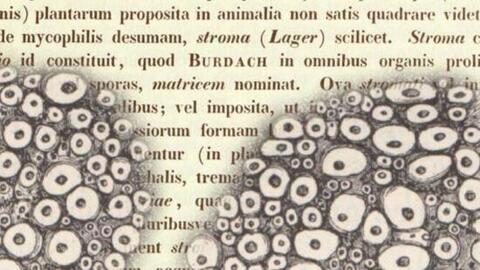
Names and representations of biological tissues
Credits: Sophie Gournet (LBD/IBPS)
This interdisciplinary project brings together the history of scientific language, the history of science and current research in biology, with a twofold objective. Firstly, analysing the variety of names and representations of living tissues, from Antiquity to modern and contemporary times, will shed new light on certain issues and pitfalls facing the most recent work on the development and ageing of biological tissues. But more broadly, this case study will also serve to observe how the way in which new discoveries are named and represented, and in particular the use of imagination through analogies between different fields of knowledge, has a retroactive effect on the formation of scientific knowledge.
Tissues are organised biological structures whose scale lies between that of cells and organs. Today, they are generally classified into four categories: nervous tissue, muscle tissue, epithelial tissue and connective tissue. The latter, which combines fibres and cells immersed in an aqueous medium, is the starting point for the project. Bichat, a pioneer in this field, noted in his Traité des membranes (1799) the difficulty anatomists had in identifying and classifying these tissues. Even today, the pathologies associated with them (sarcomas, Dupuytren’s disease, desmoid tumours, etc.) remain difficult to treat. However, recent observations converge to show that connective tissues do not have a simple mechanical function but are biologically active during development or in pathologies such as cancer.
Why have these connective tissues, which make up more than half of our body mass, remained so little known for so long? Their unique nature, both solid and liquid, on the borderline between living and inert matter, as well as their location on the periphery of organs and in the interstices of our bodies, undoubtedly provide some answers. However, certain historical and epistemological factors may also have played a role. We aim to uncover these factors by studying the names given to these tissues, which have been referred to successively or alternately in generic terms (mesenchyme, fibrous membranes, stroma, etc.) or more specific terms (e.g. according to the organ they cover: pericardium, sclera, etc.), and by analysing how they are represented. The results obtained will feed into researchers’ reflections while providing avenues for raising public awareness of a field at the crossroads of several disciplines.
This project, which places great importance on training through research, is open to anyone interested, whether students or colleagues.
Project leaders
Jonathan Fouchard, CR CNRS, Paris-Seine Institute of Biology / Developmental Biology Laboratory, “Muscle and Tendon Formation and Repair” Team, Sorbonne University.
jonathan.fouchard@sorbonne-universite.fr
Nathalie Rousseau, Senior Lecturer of Sorbonne University – Faculty of Arts and Humanities, UMR 8167 Orient and Mediterranean – “Greek Medicine and Technical Literature” team, Institut universitaire de France.
nathalie.rousseau@sorbonne-universite.fr
Project participants
Ana Isabel Duron Tejedor (2021), François Ferrié (2022), Eva Gonzalez (2022), Aydan Gün (2021).
Achievements
The first results of research on the use of the term stroma were presented at the 2021 Science Festival.
J. Fouchard & N. Rousseau, “The spread of the word stroma in biological and medical sciences in the mid-19th century,” paper presented at the 14th Congress of the French Society for the History of Science and Technology, 19 April 2023, Bordeaux
See also N. Rousseau, “Stroma,” in Etymologika, 07/10/2021.
